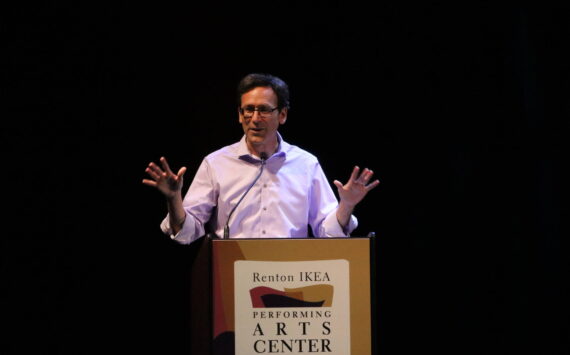Is news in the eye of the beholder?
A generation ago, news was what was in that day’s newspaper or on the segments on the nightly news. It was “news” because it was called “news”. And it was called “news” because those authoritative figures, or those bold headlines called it “news”.To put it mildly, a lot has changed in the past 30-40 years.
Cable news gave us 24-hour (usually breathless and on-site) news (as opposed to the suave and collected desk-bound anchors with their six o’clock news summaries) and then, thanks to streaming and online services, “news” became packaged in a variety of formats, settings and intentions.
Welcome to the era of “alternative facts”
“News” became more than, or at least often indistinguishable from, editorials and opinions.
What had been known as “hard news” — incontrovertible, easily confirmable, facts suddenly became nuanced, if not entirely evasive.
As the means of news (as in screens) became smaller (or in some cases, far larger) more fragmented the news industry also became more desperate for an ever-dwindling market share.
What had been formerly known as “news” became ever-more shrill, partisan and, yes, divisive.
What many of us had known as “news” — reliable, authoritative and uncontested — evaporated before many of us even noticed.
Fair and balanced?
Maybe it’s just me, but whenever I hear anyone try to convince me how “fair” or “balanced” or “honest” they are, I know that I better pay closer than usual attention to what they are selling.
It is a common trope in news presentations lately to present “both sides” of any given topic.
This falls into absurdity almost immediately. In most cases, both sides recite their “talking points” and no one listens or changes their minds. The time slot is filled, but, most of the time, nothing is accomplished — except everyone becoming convinced that they, and only they, are correct and everyone else is wrong, deceived or evil. And even when we listen or don’t come with preconceived positions, the first presenter seems convincing until we listen to the second.
The one who states his case first seems right, until the other comes and examines him.
— Proverbs 18:17
Fair and balanced usually presumes that there are two clearly defined “sides” to any given issue or topic. This is almost never the case.In any given context, on almost any topic, how many “stakeholders” are there?
And what are their non-negotiable vested interests?
There are always four sides to a story: your side, their side, the truth, and what really happened.
— Jean-Jacques Rousseau
As Rousseau put it, there are at least four. But I would argue that there are far more.
In a court case, for example, precedents (previous rulings) are brought into consideration for current or upcoming cases. In other words, cases from the past have a bearing, something to say if not influence, regarding current or future judgments.
A term that has emerged in the past few years has been “on the right side of history”.In other words, how will future generations look back on decisions some of us made now?
At some level, we will never know. Plus, who or what is “history”?and when does it ever have a unified, consistent verdict?
One example of what, to most of us has been a unified verdict of history, is that the Nazi party was an unmitigated brutal and evil ideology and political entity.
Does the resurgence of Nazi ideology — and corollary organizations within our borders, and around the world — give us reason to believe that the verdict of history is that the Nazi party was not so evil after all?
Maybe what we need is a single, unquestioned, authoritative voice. But you can imagine how much any of us would like that.
Some news organizations frame their news with clever slogans like “News you can use” or “The news you need”, “News you can trust” or, of course, “All the News That’s Fit to Print”.Notice the “you” in most of those slogans. We the reader/subscriber/listener have become, in our fractious era, the arbiters of what constitutes “news”.And most of us cling to our “side” on any issue, and, in most cases demonize those who disagree with our position. In place of actual “news’ we all too often have dueling opinions, each one inflexible, spouting slogans and accusing the other side of deception or “drinking the Kool-aid” of a cult following.
Algorithms guide us into “echo-chambers” where “If you like this, you’ll probably like that” leads us into more of the same, (aka the rabbit-hole) and rarely challenges or even informs us.
This is how we get nowhere on any given issue. From Congressional budgets to local school libraries, we get a lot of noise, hysteria and sometimes a few threats or fights, but few, if any of us are satisfied, and decisions, large or small, local or global are stalled, if not paralyzed.
In case you haven’t noticed, almost anything involving human beings is inherently complicated, contradictory and short-lived.
When it comes to any issue or topic, from minimum wage, to GMO foods to larger, more historic issues like slavery reparations or taxes or book restrictions, there are likely to be dozens, if not hundreds, of competing positions.
News should inform and equip us for the opportunities and challenges before us. Anything else is just a distraction.





